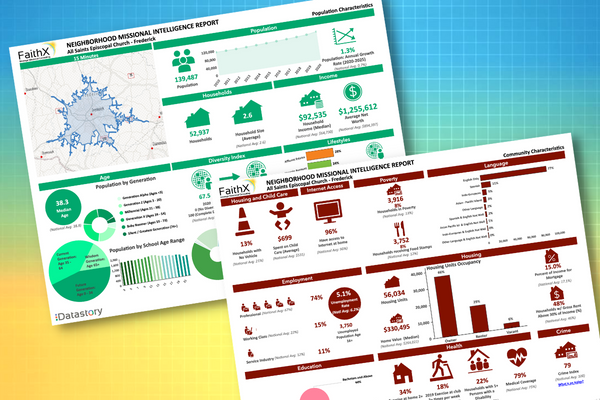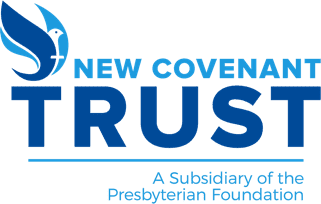
Many years ago, it seemed a church only had to open its doors and people would come. Many came out of a sense of tradition or ritual — being in church on Sundays was simply what we did. With that tradition came a sense of responsibility to give to the church and fund its ministry.
All that has changed in recent years. In fact, the shift away from conventional ideas about church and church attendance accelerated at warp speed during the pandemic shutdown.
As a result, church life — like work life — will never be the same. “Church” was once thought of as a physical place that held services at a certain time. No longer. Just like we can work anywhere at any time, we can listen to a sermon or connect with our pastor or other church members anywhere, anytime thanks to technology. Because of this dramatic change in perspective, New Covenant Trust Company (NCTC) receives many requests from congregations asking for guidance on how to evaluate and adapt their purpose, presence and plan to today’s ever-changing world.
We understand the challenges churches are facing today, and we’ve identified some tools that we believe could be helpful.
A Robust Assessment
To remain prosperous and sustainable, a church must have a compelling purpose that is God’s call for a congregation, a presence that serves its neighbors and community, and a plan that leads to vital and sustainable ministries and programs.
The first step is to have a robust understanding of congregational life. This is difficult to obtain from typical committee and session reports. For a thoughtful, qualitative understanding of church life, it is much better to collect feedback directly from church members. However, we know this can be an arduous process when done manually.
The Congregational Vitality Assessment (CVA) from The FaithX Project is a great solution. The CVA is a research-based, online diagnostic tool designed to provide a congregation with an assessment of its vitality (how healthy it is) and its sustainability (whether it has the people, financial and contextual resources necessary to survive).
“The primary focus of The FaithX Project is to help congregations survive and thrive in challenging times – and the times couldn’t be more challenging,” says Rev. Ken Howard, Executive Director of The FaithX Project. “We are at an inflection point in the history of the church. Our paradigms of how to ‘do’ and to ‘be’ church are failing us. Even before COVID, the vast majority of congregations and the judicatories that support them had already started on a downward trajectory, which the pandemic has only accelerated, leaving us a diminishingly window in which to bend our arc toward renewed vitality.”
The CVA Single Congregation Version is made available free of charge to congregations of all denominations and religions by a partnership between The FaithX Project and the Episcopal Church Foundation. NCTC is proud to have a partnership agreement with FaithX, making it available to our clients.
Getting the Most Out of the CVA
Church members can take the CVA individually, or a group can meet to complete it collectively. It contains questions to assess the following areas of church life:
- Vision, mission and discernment
- Lay engagement and empowerment
- Context awareness and inclusion
- Change readiness
- Dealing with differences
- Spiritual life and worship
- Formation, education and training
- Outreach
- Leadership and organization
- Stewardship
The CVA provides a low, moderate or high vitality ranking for each area. It offers a brief narrative that summarizes each area’s assessment, along with recommended action steps to address problems.
“The key to transformation lies leaving behind the ‘what’ of church and returning to the ‘why,’ with every congregation and judicatory radically sharpening their vision and mission and rapidly and strategically experimenting with new and different ways of fulfilling them,” says Rev. Howard. “At the core of this process is data-grounded discernment about our vitality and sustainability, about neighborhood missional opportunities and challenges, and about leveraging our strengths and gifts to engage the opportunities God has placed before us. At FaithX, data-grounded discernment and vision-guided experimentation are what we distinctively bring to everything we do, and how we help each congregation and judicatory discover its unique future.”
Since the Congregational Vitality Assessment is based on self-reporting, its results will be only as accurate as the answers provided. To get the most out of this tool, we recommend that church members answer the questions as honestly and objectively as possible.
Because the CVA recommends specific areas of focus and potential opportunities for improvement, it’s a key step in determining a congregation’s purpose, presence and plan.
FaithX also offers a CVA Judicatory Platform. This tool, available on an annual subscription basis, enables presbyteries to administer the CVA directly to their congregations, measure congregational vitality and sustainability against a common set of metrics, add customized presbytery-specific question, and evaluate the effectiveness of the presbyteries’ vitality interventions by monitoring vitality and sustainability assessment for multiple years.
A Place in the Community
While an assessment is important, an understanding of the church’s local presence is just as important. A congregation must discern God’s call or purpose for serving people in its neighborhood and community.
We recommend that congregations review an informative tool that provides neighborhood and community demographics, the Neighborhood Missional Intelligence Report (NMIR) by FaithX.
The NMIR is an interactive, infographic report that provides a rich snapshot of the demographics, trends and issues in the neighborhoods and community a church serves to help it more effectively carry out God’s vision and mission. The NMIR reports on 40-plus key demographic and missional context factors within a 5-minute radius of the church (neighborhood), as well as a 15-minute radius (community).
The Path Ahead
Utilizing the CVA, the CVA Judicatory Platform, and the NMIR can provide a congregation with valuable information and help determine, or re-shape, its purpose, presence and plan to best serve its members and the community. Combined, these reports can add clarity and assist a congregation in discerning God’s call.
For more information about these tools, click here. Please know NCTC and the Presbyterian Foundation are here to serve and help as you navigate these unprecedented times. Feel free to reach out to us any time at 800-858-6127, Ext. 6.
